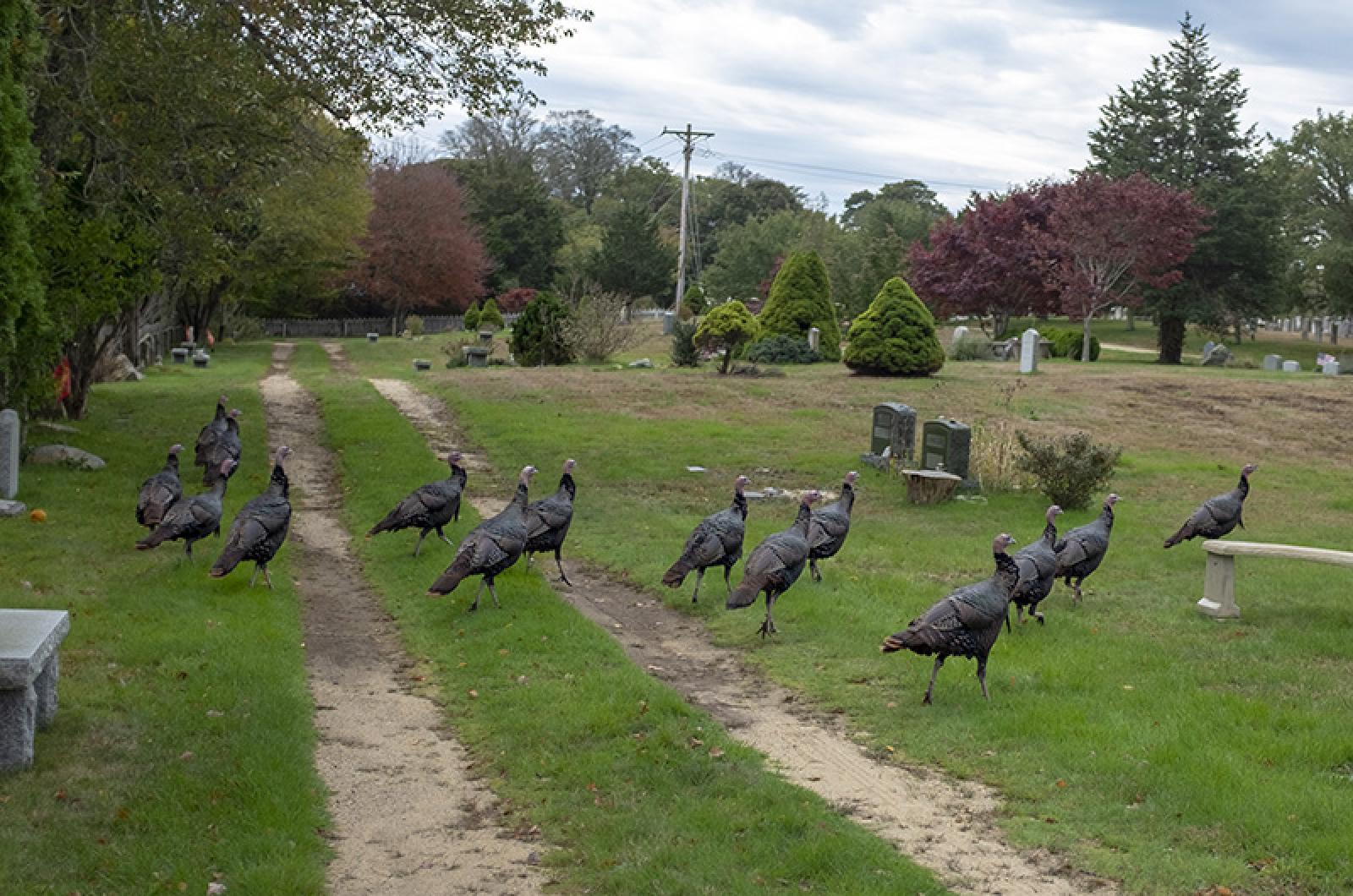My mother always made a big scene when the Thanksgiving turkey came out of the oven. She asserted herself most as the bird was about to be carved, when she would lay claim to her favorite part of the turkey, the part she called the tuchus.
Since tuchus is Yiddish slang for the butt or bottom, she had very little in the way of competition from us kids who thought that eating that part sounded just awful. Now I know it is the turkey tail she was after, not the beast’s bottom that my childhood brain imagined.
We all have our favorite part of the holiday bird whether it is the tuchus, breast, wing, thigh or leg. Perhaps more interesting, though, are the parts of the turkey that won’t be found on your dinner table, but on its living relatives, the wild turkeys.
A turkey is more than the sum of its eating parts. Wild turkeys have a cast of curious appendages that provide form, function and funkiness to these bellicose birds.
A primer on parts would include beard, snood, caruncle, dewlap and wattle. Though these words sound like silly prattle, they are actually part and parcel of a healthy and hearty wild turkey.
Feet first, look above them for the spurs. On female turkeys, the spurs are small nubs on the back of their legs. The males’ spurs are much more prominent and useful. Spurs can grow a quarter to a half inch per year and top out at an impressive inch and a half or more for older birds. These sharp claws or talons can be used to intimidate or assert dominance in a flock or fight a foe.
Males have other showy features to lure mates and repel aggressors. Consider the caruncles. Both male and females have these bulbous bumps on the head and neck. These are less pronounced on the female but, on the male, will enlarge and turn bright red when the bird is excited.
Another odd part is the snood, which is a fleshy appendage above the bird’s beak. The snood starts at about a half an inch long, but will expand and lengthen during a male or tom’s display. It can get so big that it hangs over and below the beak. The National Wild Turkey Federation indicates that the snood has no known biological function (might I suggest other than impressing the ladies).
And how about the beard? Though mostly on Toms, sometimes females may have a smaller version of this stiff modified feather that hangs from the turkey’s breast. Toms can have a 10-inch beard, as it can grow a few inches or more a year.
Finally, don’t forget the facial wattles, more fleshy skin that hangs from the turkey’s neck and chin, again more prominent on the males. Also called dewlaps, these get red and swollen like the snood and caruncles.
Whether you like the turkey features on the inside or the outside (or a little of both like my mother with the tuchus), we can all agree that the turkey has a special place in our minds, our hearts, on our plates. As the great French gastronome Jean-Anthelme Brillat-Savarin suggested, if Adam and Eve ruined themselves for an apple, “what might [they] have done for a truffled turkey.”
Suzan Bellincampi is director of the Felix Neck Wildlife Sanctuary in Edgartown, and author of Martha’s Vineyard: A Field Guide to Island Nature and The Nature of Martha’s Vineyard.




Comments
Comment policy »